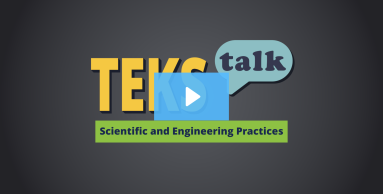- Science
- Grade 9
- Scientific and engineering practices
BIO.1.C

Knowledge and Skills Statement
The further explanation is designed to be a resource for educators that helps them better understand the topic their students are learning. Further explanations may be written at a more complex level than would be expected for students at the grade level.
Like scientists, engineers must identify relevant variables, decide how they will be measured, and collect data for analysis. Their investigations help them identify how effective, efficient, and durable their designs may be under various conditions. In addition to acting as scientists and engineers, Texas school students are expected to follow the Texas Education Agency-approved safety standards.
Classroom and field investigations:
Some investigations involve simple observations as scientists try to understand a process or behavior. This type of investigation is called a descriptive investigation.
A comparative investigation involves comparing a process or behavior in two different settings. A correlative investigation attempts to determine how related two variables are.
Another kind of investigation is called an experimental investigation. An experimental investigation involves a test with identified variables. Some variables stay the same throughout the experiment, the scientist manipulates one variable, and another variable responds to the manipulated variable. Scientists observe the relationship between the variables during the experiment. This kind of experiment can also be called a controlled experiment.
Research
ACS Committee on Education. ACS Guidelines and Recommendations for Teaching Middle and High School Chemistry. 2018. Washington: American Chemistry Society. https://www.acs.org/content/dam/acsorg/education/policies/guidelines-teaching-mshs-chemistry/mshs-guidelines-final-2018.pdf
Summary: The purpose of this document is to provide guidance to the middle and high school physical science and chemistry education community, with a focus on the nature of instruction, the core ideas to teach, the physical instructional environment, safety, sustainability, and the professional responsibilities of teachers. Although this document is not intended to be a prescribed course outline or “how to” list, it is intended to emphasize the essential components of a successful and safe learning environment for the teaching of chemistry.
